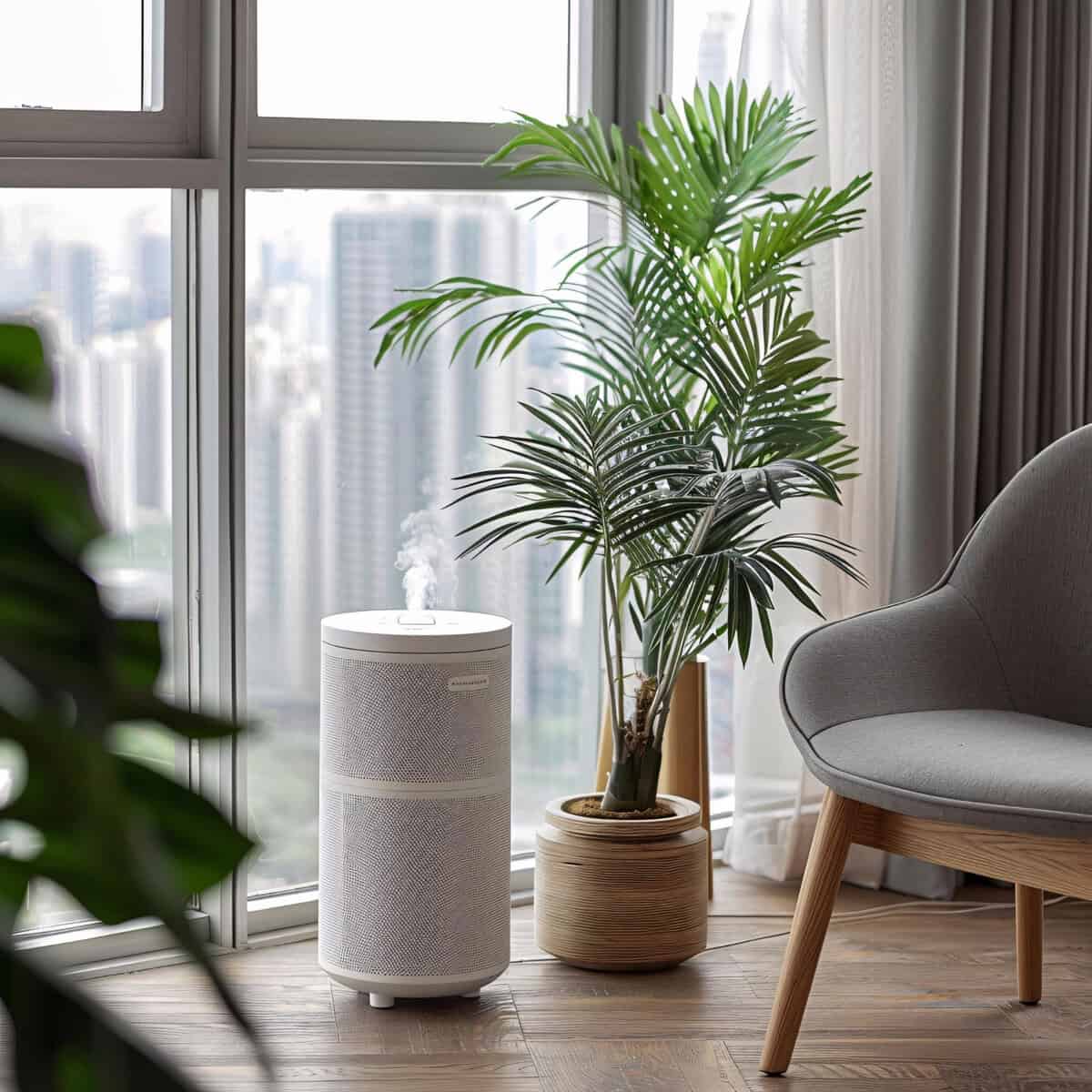
Breathing clean air in your home is crucial for your health and well-being. Indoor air quality can affect everything from your respiratory health to your overall comfort. Many household items and activities can pollute the air inside your home, but there are several effective ways to keep it fresh and clean.
One of the best ways to purify the air in your home is by using air purifiers. Air purifiers help remove harmful particles and allergens, making the air cleaner and healthier to breathe. Choosing the right air purifier for your space and needs can have a significant impact on your indoor air quality.
Maintaining proper ventilation is also essential. Good ventilation ensures that fresh air circulates throughout your home while removing stale air and pollutants. Simple actions like opening windows or using exhaust fans can help improve air quality.
In addition to mechanical solutions, incorporating houseplants can boost indoor air quality. Many plants naturally filter toxins from the air, providing a natural and beautiful way to purify your home.
Regular cleaning and dusting play a vital role too. Dust and dirt accumulation can lead to poor air quality and trigger allergies. Keeping your living space clean helps minimize pollutants and keeps the air you breathe healthier.
By making a few changes and keeping up with regular maintenance, you can ensure that the air in your home stays fresh and clean. Ready to learn more about each method? Let’s dive into the details.
Using Air Purifiers
Air purifiers are an excellent tool for improving the air quality in your home. They help to remove pollutants, allergens, and other harmful particles from the air, making it cleaner and safer to breathe.
1. Choose the Right Air Purifier: Different air purifiers target different pollutants. Some are designed to remove dust and pollen, while others focus on mold spores and pet dander. Understand your needs and select an air purifier that addresses them. HEPA filters are effective for most households as they capture a wide range of particles.
2. Proper Placement: Place your air purifier in the rooms where you spend the most time, such as the living room or bedroom. Ensure that it’s not blocked by furniture to maximize airflow. Some purifiers are portable, allowing you to move them between rooms as needed.
3. Regular Maintenance: To keep your air purifier working efficiently, perform regular maintenance. This includes cleaning or replacing filters according to the manufacturer’s instructions. A dirty filter can reduce the purifier’s effectiveness.
By selecting the right air purifier and maintaining it properly, you can significantly improve the air quality in your home.
Maintaining Proper Ventilation
Good ventilation is essential for keeping the air in your home clean and free from pollutants. Proper ventilation helps to circulate fresh air, remove stale air, and reduce indoor pollution levels.
1. Open Windows: One of the simplest ways to improve ventilation is by opening windows. This allows fresh air to flow in and pushes stale air out. Try to open windows on opposite sides of the room to create a cross-breeze.
2. Use Exhaust Fans: Exhaust fans in kitchens and bathrooms help remove moisture and pollutants generated by cooking and bathing. Make sure these fans are working correctly and use them regularly.
3. Install Ventilation Systems: For a more advanced solution, consider installing a mechanical ventilation system. These systems can control the amount of fresh air entering your home and remove polluted air. They are especially useful in homes that are well-sealed and have limited natural ventilation.
4. Check Air Ducts: Ensure your HVAC system’s air ducts are clean and free from obstruction. Clogged ducts can restrict airflow, reducing the efficiency of your ventilation.
Maintaining proper ventilation not only helps to keep the air in your home clean but also ensures a comfortable and healthy living environment.
Incorporating Houseplants
Houseplants are a natural and beautiful way to improve your home’s air quality. Some plants are particularly good at filtering toxins and adding oxygen to the air.
1. Choose Air-Purifying Plants: Certain plants are known for their air-purifying abilities. Examples include spider plants, peace lilies, snake plants, and Boston ferns. These plants absorb harmful pollutants like formaldehyde, benzene, and trichloroethylene through their leaves.
2. Strategic Placement: Place plants in areas where you spend a lot of time, such as your living room and bedroom. Grouping several plants together enhances their ability to purify the air. You can also put plants near windows to maximize their light intake and improve their efficiency.
3. Care and Maintenance: To keep your plants healthy, make sure they get the right amount of water and light. Overwatering can lead to mold growth, which can harm indoor air quality. Follow care instructions specific to each plant to ensure they stay effective in cleaning the air.
By adding houseplants to your home, you can enhance both your indoor air quality and your living space’s aesthetics.
Regular Cleaning and Dusting
Regular cleaning and dusting are essential for maintaining good indoor air quality. Dust, allergens, and other particles can accumulate quickly, making the air in your home less healthy to breathe.
1. Vacuum Regularly: Use a vacuum cleaner with a HEPA filter to clean your floors and carpets. HEPA filters trap dust and allergens that regular vacuums may miss. Vacuum at least once a week, or more often if you have pets.
2. Dust Surfaces: Dust all surfaces, including furniture, shelves, and electronics. Use a damp cloth or a microfiber duster to trap dust particles rather than spreading them into the air. Don’t forget to clean hard-to-reach places like ceiling fans and baseboards.
3. Wash Bedding and Curtains: Wash your bedding and curtains regularly to remove dust mites and allergens. Use hot water to kill dust mites and other allergens effectively.
4. Mop Floors: After vacuuming, mop hard floors to remove any remaining dust and allergens. Use a damp mop with water or a cleaning solution suitable for your flooring type.
By staying on top of regular cleaning and dusting, you can keep the air in your home cleaner and healthier.
Conclusion
Ensuring the air in your home is clean and fresh is important for your health and comfort. By using air purifiers, maintaining proper ventilation, incorporating houseplants, and keeping up with regular cleaning and dusting, you can significantly improve your indoor air quality. Each step plays a vital role in making your home a healthier place to live.
If you need professional advice or assistance with your HVAC system or air purification methods, My Jockey is here to help. We provide comprehensive air purification services to ensure your home’s air quality remains at its best. Contact My Jockey today to enhance the comfort and health of your home!
